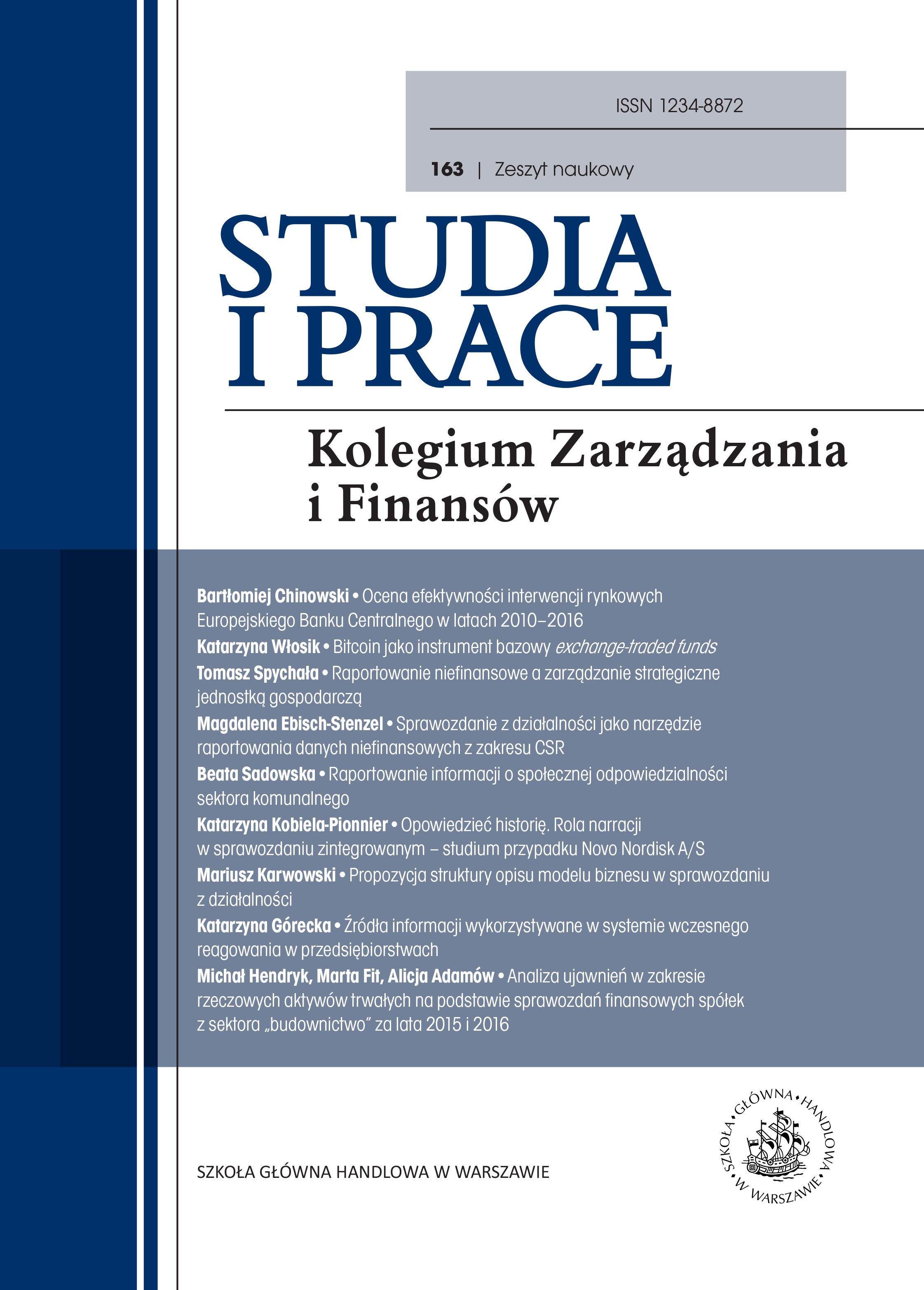Sources of Information Used in the Corporate Rapid Response System
DOI:
https://doi.org/10.33119/SIP.2018.163.8Keywords:
market information, monitoring of the organisation environment, Russian embargo, processing sectorAbstract
The article presents the sources of information used in the corporate environment analysis. The key to efficiently forecast future events is to monitor the environment, i.e. to detect weak signals from the corporate environment. The analysis of a more distant environment helps to identify the direction of future changes, and the analysis of closer environment to adjust the product to future market conditions.
Downloads
References
2. Ansoff I., McDonnell E., Implanting Strategic Management, Prentice Hall, New York 1990.
3. Cabała P., System wczesnego ostrzegania w przedsiębiorstwie, Wydawnictwo UE w Krakowie, Kraków 2008.
4. Daft R., Sormunen J., Parks D., Chief Executive Scanning, Environmental Characteristics, and Company Performance: An Empirical Study, „Strategic Management Journal” 1988, vol. 9, no. 2.
5. Daft R., Weick K., Toward a Model of Organizations as Interpretation Systems, „The Academy of Management Review” 1984, vol. 9, no. 2.
6. Drążek M., Dziwulski M., Kitała A., Koleśnikow M., Skrzypczyk M., Wpływ ograniczeń handlowych przez Rosję na sektor rolno-spożywczy w Polsce, Raport Banku BGŻ BNP Paribas, Warszawa 2015, https://www.bgzbnpparibas.pl
7. Drucker P., Zarządzanie XXI wieku, Klasyka zarządzania – Złota Kolekcja, MT Biznes, Warszawa 2009.
8. Dworzecki Z., System wczesnego ostrzegania w zarządzaniu strategicznym organizacją gospodarczą, „Doskonalenie Kadr Kierowniczych” 1985, nr 7–8, XXVI.
9. Fabiańska K., Rokita J., Planowanie rozwoju przedsiębiorstwa, PWN, Warszawa 1986.
10. Fiol M., Lyles M., Organizational Learning, „Academy of Management Review” 1985, 10 (4).
11. Gherardi S., Organization Learning, w: Internacional Encyklopedia of Business and Management, Routledge t. 4, London–New York 1996.
12. Gilad B., Early Warning: Using Competitive Intelligenceto Anticipate Market Shifts, Control Risk, and Create Powerful Strategies, Amacom, New York 2004.
13. Glinka B., Kostera M., Nowe kierunki w organizacji i zarządzaniu. Organizacja, kontekst, procesy zarządzania, Wolters Kluwer Polska, Warszawa 2012.
14. Hitt M., Keats B., DeMarie S., Navigating in the New Competitive Landscape: Building Strategic Flexibilityand Competitive Advantage in the 21st Century, „Academy of Management Executive” 1998, vol. 12, no. 4.
15. Kotler P., Caslione J., Chaos. Zarządzanie i marketing w erze turbulencji, MT Biznes, Warszawa 2009.
16. Langefors B., Theoretical Analysis of Information Systems, 4th ed., Studentlitteratur, Lund Sweden, Auerbach Publishers, Philadelphia 1973.
17. Moszkowicz M., Strategia przedsiębiorstwa okresu przemiany, Wydawnictwo Naukowe PWN, Warszawa 2000.
18. Mytlewski A., Monitoring ekonomiczny przedsiębiorstwa, Wydawnictwo UG, Gdańsk 2007.
19. Nizard G., Metamorfozy przedsiębiorstwa. Zarządzanie w zmiennym otoczeniu organizacji, Wydawnictwo Naukowe PWN, Warszawa 1998.
20. Penc J., Strategia zarządzania. Perspektywiczne myślenie. Systemowe działanie, Placet, Warszawa 1994.
21. Pomykalski A., Zarządzanie innowacjami, Wydawnictwo Naukowe PWN, Warszawa–Łódź 2001.
22. Rakowska A., Przewaga konkurencyjna polskich przedsiębiorstw w kontekście wymagań stawianych nowoczesnym organizacjom, „Kwartalik Naukowy Politechniki Śląskiej Organizacja i Zarządzanie” 2008, nr 4.
23. Senge P., Piąta dyscyplina. Teoria i praktyka organizacji uczącej się, Dom Wydawniczy ABC, Warszawa 2000.









